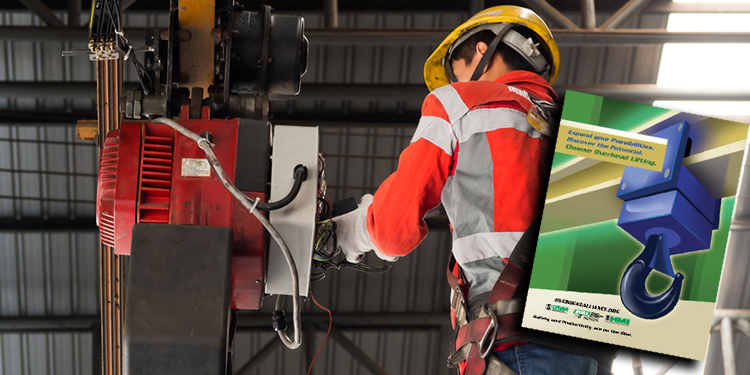Keep Your Overhead Lifting Environments Safe, Productive With Operator Training And Certification

This is the third in a series of posts detailing 13 reasons why overhead lifting and handling technologies — specifically cranes, hoists, and monorails — can improve a manufacturing or distribution operation’s efficiency, productivity, safety, and sustainability. Read more in the free Overhead Alliance publication, “Expand Your Possibilities. Discover the Potential. Choose Overhead Lifting.”
To keep an operation both safe and productive, it is critical to train employees on how to properly use all equipment they will be using while on the job. This includes overhead handling systems. Workers who are properly trained and certified as competent to safely and productively operate and repair overhead cranes, hoists, workstation cranes, and monorails are also more valuable to their operation. Further, in certain regions of the country and on certain types of equipment, training and certification is required.
To make training on today’s overhead lifting solutions both accessible and affordable, many suppliers — including the members of MHI’s Overhead Alliance, which includes the Crane Manufacturers Association of America (CMAA), the Hoist Manufacturers Institute (HMI), and the Monorail Manufacturers Association (MMA) — offer multiple free or low-cost training sessions either through their dealer network or at their own facilities.
Training courses include guidelines for proper operation, inspections, routine maintenance, and repair of overhead handling equipment, as well as appropriate certifications. They include:
- CMAA publishes an Operational Guide for Lifting Devices, as well as offers an Overhead Crane Operator Certification through the National Commission for the Certification of Crane Operators (NCCCO).
- HMI offers multiple operator manuals and recommended practices for hand, lever, and powered hoists, including inspection and maintenance.
- MMA provides recommended practices for the operation of National Commission for the Certification of Crane Operators (NCCCO)..
CMAA, HMI, and MMA are also members of the Occupational Safety and Health Administration’s (OSHA) Crane, Hoist and Monorail (CHM) National Alliance. Through the OSHA CHM Alliance, the organizations provide information, guidance and access to training resources — including the Overhead Lifting Best Practices Guide — that help protect the health and safety of workers operating hoists, cranes, and monorails. The training program specifically emphasizes measures designed to reduce workplace incidents and prevent employee exposure to electrical shocks, electrocution, falls from heights, and being struck by moving equipment.
Overhead Alliance members frequently offer training courses for maintenance personnel, helping them to keep their facility’s cranes, hoists, and monorails in peak operating condition while reducing downtime and its associated costs. Sessions typically include both classroom time and hands-on practice in disassembling, inspecting, diagnosing, servicing and reassembling component parts. Technicians who complete the courses gain valuable skills in repair and preventive maintenance activities. Further, trainees are given an equipment-specific operation and repair manual, as well as earn a certificate that confirms their qualifications to troubleshoot, service or repair it.
Like all equipment, overhead lifting technology continuously evolves in both features and functionality. So too do the best practice techniques for operating and maintaining it. For that reason, crane, hoist, and monorail operators and service technicians should commit to being retrained and recertified on a regular basis, generally every 24 months or so.
How many other safety and productivity benefits will your operation gain from using overhead handling equipment? MHI’s Overhead Alliance offers answers in “Expand Your Possibilities. Discover the Potential. Choose Overhead Lifting.” The free publication explores 13 different ways overhead lifting technologies will enhance manufacturing and distribution operations.



